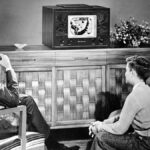Long before the discovery of the modern computer, Charles Babbage designed machines that could handle complex mathematical operations and developed the world’s first programmable computing device. As a brilliant mathematician, Babbage contributed to various fields such as the development of railways, and business productivity. There is general consensus that the English philosopher and inventor Charles Babbage should be recognized as the “father of the computer.” The “Analytical Engine,” his design for a mechanical computer, is his claim to fame. The Analytical Engine was created by Babbage with the intention of automating mathematical operations through the use of punch cards. Although Babbage was unable to build a fully functional model of his Analytical Engine, his theories helped pave the way for the creation of today’s computers. In mathematics, he is credited for creating the idea of algebraic invariants and the notion of a “difference engine,” a mechanical device that could automatically calculate mathematical tables.
Who was Charles Babbage?

Babbage was quite curious in his childhood. In his autobiography, he says he made it customary that whenever he received a new toy, he asked his mother, “What’s in it?” Another custom was to disassemble them to understand how they worked. This sense of curiosity made led Babbage to understand machines and their mechanisms at a very young age.
In 1810, he began studying mathematics at Trinity College, Cambridge University. At that time, mathematicians and engineers were making calculations by consulting books filled with charts. These books included trigonometric functions (sinus, cosine, and tangent) and logarithmic charts. There were hundreds of tables and thousands of numbers on each table. The values in the charts were extracted by hand.
In 1812, Charles Babbage moved to Peterhouse College. During his studies in the school’s library, he discovered numerous errors in the numerical charts. These appeared to be human errors. Various mechanical calculators were used at the time. However, these tools were only useful for a few tasks. Based on his observations, Babbage designed a machine that could calculate these charts quickly and eliminate human error.
In 1822, he submitted a proposal to the Royal Astronomical Society for a calculator. Babbage also commissioned an engineer to supervise the work. The engineer began working in a workshop near Babbage’s house, where there was a machine tool carefully designed by Babbage. To carry out this gigantic task, Babbage was constantly seeking and receiving financial assistance from the British government.
The Difference Engine of Charles Babbage

Charles Babbage called the device he proposed the “Difference Engine.” Perhaps because of the complexity of the work, some disputes arose between Babbage and the engineer, and the machine was never finished. In 1842, the government ceased financial support. Babbage later improved the machine and named it “Difference Engine 2.” In 1991, the London Science Museum recreated Babbage’s design and made the machine operate. In 2005, a printer was added to Babbage’s design. Both devices worked perfectly.
When his father, wife, and son died in 1827, Babbage took a break from his studies and set off for a journey in Europe. During his journey, he considered a more comprehensive computing device that could carry out a series of instructions. Babbage had a machine in his head that took input through punch cards, stored answers, and also printed output with a printer. In 1835, he produced the first of many designs for an “Analytical Engine.” This machine was the pioneer of today’s programmable computers. The design consisted of 500 large technical drawings, 1,000 pages of engineering calculations, and thousands of pages of drafts. Unfortunately, this machine was never completed.
Babbage’s designs inspired the pioneers of modern computers, and he had significant influence in other fields as well. While traveling in Europe in the 1820s, Babbage toured several factories and examined the forms of production there. In 1832, he published his book “On the Economy of Machinery and Manufactures.” This work is considered the first example of productivity research in a business field and industry, now known as operations research. Babbage also applied his methods to the postal system in England. The result was the world’s first inexpensive and efficient mail system.
Later, Babbage made a Table of the Logarithms of the Natural Numbers: From 1 to 108,000 which was so well received that it was translated into so many European languages.
Babbage also studied the efficiency of the rail systems, which at that time was still fairly new. In addition to this work, he developed a special vehicle with instruments to record the shakes during a train journey and a device known as the cowcatcher for removing objects from the rails in front of the moving train.
Charles Babbage and the Analytical Engine

Babbage’s Analytical Engine was the first known general-purpose, mechanical computer design in history. Although never finished, the concepts in the design of the machine were still in use even 100 years later. The program and data were entered via punch cards. The output consisted of a printer, a curve plotter, and a bell. The machine’s memory was capable of storing 1,000 numbers, each with 50 digits. The language of the program was very similar to the language used on the first computers that would appear 100 years later.
Loops and conditional branching were employed by the machine. There, Alan Turing‘s famous concept was actually developed much earlier than it first appeared. Although Babbage’s immediate impact on the subsequent development of calculators is debatable, engineer Howard H. Aiken, who was primarily responsible for IBM’s 1944 Harvard Mark 1 (the first large-scale, automated digital computer in the United States), said of Babbage’s writings on the Analytical Engine: “There’s my education in computers, right there; this is the whole thing, everything I took out of a book.” That is why Charles Babbage is the father of computer.
The death of Charles Babbage
In 1811, Babbage succeeded Isaac Newton, Isaac Barrow, Bishop Turton, and Professor Airey as Lucasian professor of mathematics. He belonged to several academic and literary organizations and was a Fellow of the Royal Society.
In London, England, Babbage passed away on October 18, 1871, at the age of 79. The autopsy results indicated that Charles Babbage died of kidney failure, most likely due to a severe urinary tract infection. Babbage is known as one of the forefathers of the modern computer due to his influential work in computer science and his novel approach to mechanical engineering.
Charles Babbage quotes
- “Errors using inadequate data are much less than those using no data at all.”
- “The economy of human time is the next advantage of machinery in manufactures.”
- “On two occasions I have been asked, ‘Pray, Mr. Babbage, if you put into the machine wrong figures, will the right answers come out?’ I am not able rightly to apprehend the kind of confusion of ideas that could provoke such a question.”
- “As soon as an Analytical Engine exists, it will necessarily guide the future course of science.”
- “At each increase of knowledge, as well as on the contrivance of every new tool, human labour becomes abridged.”
- “What is there in a name? It is merely an empty basket, until you put something into it.”
- “I wish to God these calculations had been executed by steam.”
- “I have no desire to write my own biography, as long as I have strength and means to do better work.”
Bibliography
- The background image in the cover picture: Baranozdemir/Getty Images
- Ole Immanuel Franksen, Mr. Babbage’s Secret. The Tale of a Cypher – and APL (Birkerød, Denmark: Strandbergs Forlag, 1984.
- Table Of Logarithms Of The Natural Numbers: From 1 To 108000 – Charles Babbage – Google Books
- Charles Babbage, 1989. Martin Campbell-Kelly (ed.). The Works of Charles Babbage. Vol. V. London: William Pickering.
- Maboth Moseley, 1964. Irascible Genius, The Life of Charles Babbage. Chicago: Henry Regnery.
- Doron Swade, 2002. The Difference Engine: Charles Babbage and the Quest to Build the First Computer. Penguin. ISBN 9780142001448.






